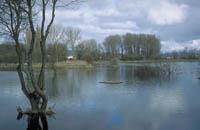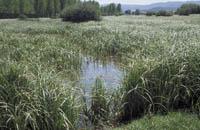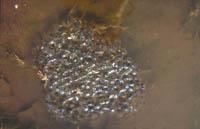Wetlands of the Basque Country (IX): wetlands created near the rivers of the Plain

The humid zones created in the vicinity of the rivers of the Plain are concentrated mainly in several sections of the medium and low courses of the aforementioned rivers (in zones of slow mobility and with very extensive channels in the meanders) and in plains of alluvial sediments.
These wetlands have their origin in the permeable materials of the Quaternary piled on waterproof substrates, poorly consolidated materials of great porosity, which gives them a great capacity of accumulation of large amounts of water. Using a metaphor it can be said that these media are giant sponges. In these conditions, these aspects usually present during the whole year a high freatic humidity, which gives rise to small wells and ponds in depressed areas where peatlands, wet meadows, reed and freatic level emerge.
Vegetation vegetation vegetation vegetation vegetation vegetation vegetation
The high freatic level characteristic of the rivers of the Plain and the flat topography of the land make that around these wetlands different belts of vegetation develop. In the depressed areas, as a result of the outcrop of the freatic level, small wells usually appear. They inhabit abundant communities of freshwater aquatic plants. Among the species that form these communities stand out the floating plants like the lentils of water, the vascular plants of the genus Najas that inhabit under the water or the algae of the genus Chara, the rebounds with several organs under the water and others on the water, the nenufares and the heads of water, or the plants of the genera Myriophyllum and Utricularia that live diluted near the bottom.

However, in the vicinity of the wells, due to the high level of the water table, there are usually conflicting or muddy soils. It predominates the heliophytes of the genus Carex, along with plants like Athaea officinalis, Lysimachia vulgaris, Ranunculus repens... Finally, in the highest areas, although the water level is close to the terrestrial surface, in which the presence of water is not evident due to the predominance of the reeds of the genera Juncus and Scirpus, a plant community known as ihitza is developed. In the humid areas near the Aturri river are also the peatlands of the type described.
Fauna and fauna Fauna of the Andes
From the faunistic point of view, it is worth mentioning the importance that these spaces have for the reproduction of amphibians, especially in the south of the territory, where, due to the summer season, amphibians have little space for the extraction of eggs and tadpoles.
Among the amphibians that reproduce in these wetlands related to rivers are the spur toad, the Iberian painted toad, the spotted toad, the corridor toad, the txantxikua and the marmolaire triton.

In summer, the dry edges of these wetlands are also very suitable for reptiles such as the snake with ties or the staircase snake, with ideal conditions for hunting and body warming.
As for birds, the combination of species of countryside and waterfront around these unique wetlands makes diversity relatively large. In this sense, it is worth mentioning the nest of relatively small species in the Basque Country as the common porrón, the common amiltxo, the rooster, the common focha, the reed and the potter.





